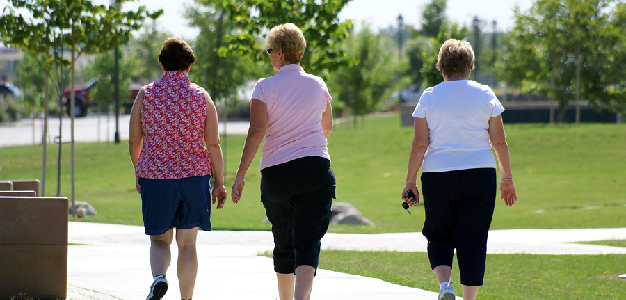ABC radio’s Amanda Smith recently interviewed American cardiologist Ben Levine who outlined his method for keeping our heart and blood vessels ‘young’. A young heart is a supple heart.
He says our heart and blood vessels are like rubber bands. Rubber bands start off springy and elastic, but if they sat in a drawer for 30 years, they’d become dry and stiff.
The same thing happens to our hearts if we’re sedentary, and stiff hearts don’t pump very well. What keeps a heart youthful and elastic is physical activity.
We can affect the elasticity of our heart up to about age 65. After that, the stiffness becomes irreversible.
Professor Levine has investigated how much exercise we need to preserve that suppleness, and he’s concluded that the right ‘dose’ is to do something 4-5 days a week.
Here’s his formula.
On two or three days do about 30 minutes of something moderate that makes you breathe a bit harder but would let you carry out a conversation.
On one day do something longer, say an hour or more. Perhaps walking, biking or even gardening.
Make at least one session more intense, for example, exercise more vigorously for four minutes, then rest for three, and do that four times.
Finally, do at least one session a week of strength training, which can be on a separate day or on the same day as one of the other sessions.
His overriding message — that the state of our bodies is more a function of what we do than how old we are — is good to hear.
But what if your favourite exercise is Pilates, which isn’t very aerobic or intense? And maybe five times a week sounds impossible.
It’s important to keep your eye on the big picture.
On one hand it’s great to know that if you get out and get moving, and make a habit of it before you’re 65, you can keep your heart and blood vessels ‘young’.
On the other, cardiovascular health isn’t the only reason to exercise. If you want to preserve bone and muscle, for example, Prof Levine’s regime wouldn’t be ideal.
Take the national recommendation of 150 minutes of physical activity per week as your guideline and adapt it to your health needs. 150 minutes is equivalent to five sessions of 30 minutes, though you don’t have to break it up that way.
A suitable exercise regime also needs to reflect what your body can do, and what’s available and affordable.
If what you love is Pilates or yoga or tai chi, and you do it once a week, look at what you can do on other days. If you can walk comfortably, that could be a good place to start, because it’s cheap and convenient.
Once you’re doing something twice a week, build up to a third session.
When you get to four sessions a week, you’ll be active on most days and the national guideline won’t be far off. If it takes a year to get that far, no problem.
If you can’t easily walk, get in the water or get yourself an exercise bike.
If you heard the interview and felt deflated when Professor Levine said that exercising two or three times a week doesn’t make a difference, or that after age 65 it’s too late to rejuvenate your heart, remember that he says those things within very specific context.
Stay positive. Inside the big picture, and the context of your whole life, every bit counts.

